As The Museum Terns…
Milford (Google Maps Location)
May 17, 2008
The irony was not lost on myself nor my traveling companions for the day (Rob and Yvonne); that is, on the way to the Audubon Society Center we passed a bunch of huge invasive Monk Parakeet nests along the coastline. Monk parakeets, of course, are an odd sight to see (and hear) in New England… but we were going to learn about some more familiar birds at the Audubon Center.
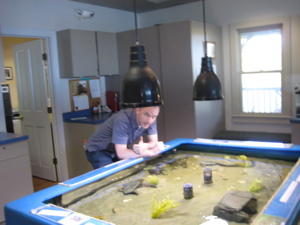
Milford Point marks my second visit to Audubon Centers in the state and its location makes it unique. Milford Point is a spit of land that curls westward at the mouth of the 149-mile-long Housatonic River, where freshwater meets the salt of Long Island Sound. It is a biologically rich area of varying habitats, including more than 8 acres of barrier beach and the adjoining 840-acre Wheeler Wildlife Management Area.
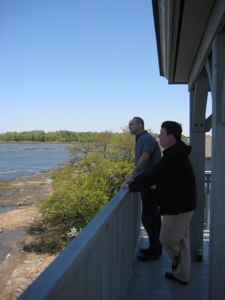
Finding it is a bit of an adventure, as one must navigate the spider webs of a typical Connecticut coastal community. If you go, my advice is, “Just keep driving.” You’ll eventually get there. Once there, we chose to walk the boardwalks outside the building; one goes inland to the salt marsh and one goes the opposite way, towards Long Island Sound.
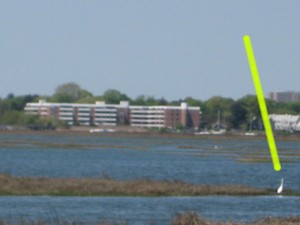
Egret… I think
On this particular (beautiful) boardwalk, we read signs about the slow demise of Piping plovers and Least Terns. I took a picture of the sign offering up possible explanations for this, but I can hardly read it. I’m quite confident it comes down to developing nesting areas, litter, and diminishing food resources due to various human impacts.
Here is what I can glean from my terrible pictures: Piping plovers are small and can live up to 15 years. They do the broken wing act to distract potential predators from nests and are a Federal “threatened” species.
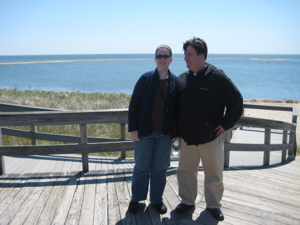
So please, you jerks, try to avoid crushing tern eggs. And littering and all that good stuff. Thanks. We walked back to the nature center building and went up the winding staircase to the roof outlook. This 70-foot-high covered observation tower provides panoramic views of marsh, river and Sound.
Inside, we were greeted by a very nice woman who was eager to give us a “tour.” This was sweet and all, but the center is essentially one room with a few animals and plenty of descriptions… I thought. We immediately gravitated over to the “Osprey Cam” which was trained on an osprey.
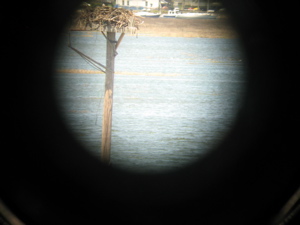
The rest of the place was just what you’d expect… though our guide was excellent and very gracious even when I asked my dumb questions. There are tanks of local fauna; exhibits on the ecology of the Long Island Sound and the estuary at the mouth of the Housatonic. A salt-water tank that displays many of the smaller creatures of the Sound, including mollusks and fish, is always a crowd pleaser. And so, I offer you the lazy-man’s nature center report – through photos:
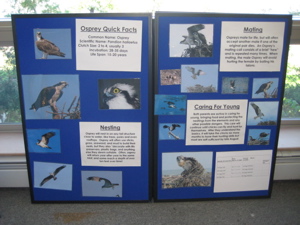
All about the Grand Ole Osprey!
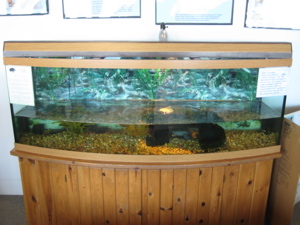
Terrapin tank – she was a beaut.
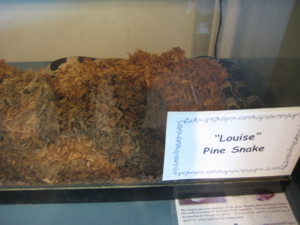
Your typical pine snake… somewhere
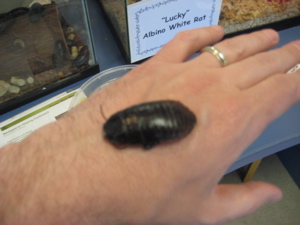
Your typical Madagascar Hissing cock-a-roach
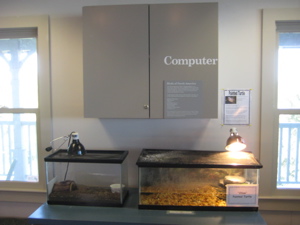
Give up thieves… you’ll never guess where they store the computer
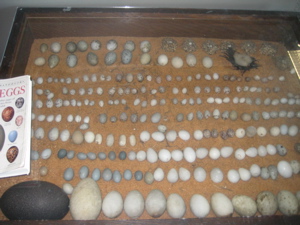
Eggs. That’s right, just eggs.

Some kid was next door having a birthday party, totally hoarding all the live animals. So I took a picture of their fun with the “guilt flash” set on high.
The boardwalk into the salt marsh again offers some interesting signs to read and not-so great views because of the factories and things across the marsh.
I thought this place was really very nice and an isolated little enclave to escape to after sitting on I-95 for hours, as the people who live here do every day.
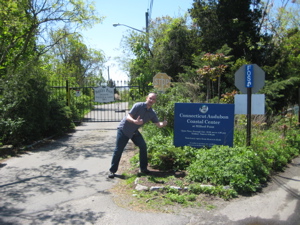
![]()

Leave a Reply